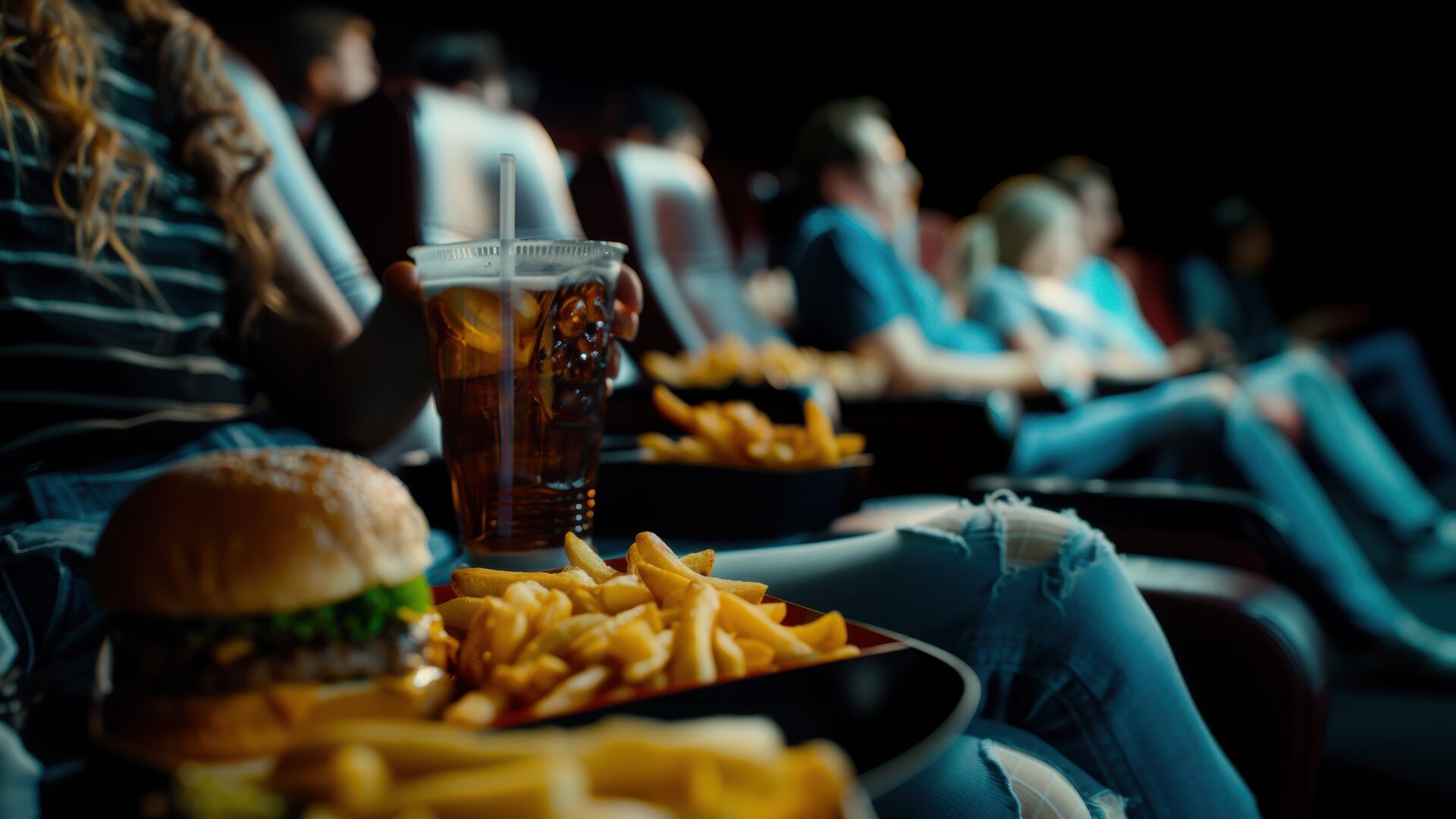Movie theaters across America are focused on making a “premium push” regarding their food and beverage offerings. And in-theater dining has been met with mixed success, amid a slew of challenges that theatres are facing in a competitive environment for entertainment dollars – especially amidst an inflationary period.
After an alarmingly cold start for the domestic movie industry during the first half of 2024, Box Office Pro projects full-year cinema receipts of just $8.2 billion for the 12-month period ending December 31. That figure is down approximately 8% from 2023 levels and a precipitous drop of more than 30% versus pre-pandemic times.
Reflecting hot summer weather across much of the U.S., air-conditioned theaters may help drive consumers back to the movies in the weeks ahead, in tandem with strong performances from a couple of recently released high-profile Hollywood sequels. “Inside Out 2” (Disney) and “Despicable Me 4” (Universal) have been cause for some near-term optimism.
Concessions Spending
With an influx of people heading to theatres, how are US exhibitors doing on the in-theatre dining and concessions front? This is a key financial metric monitored closely by theatre owners and other industry stakeholders, as publicly traded companies typically report blended gross margins in this category north of 80%.
“While a number of theatres offer in-theatre dining and others provide a modified option of delivering food and beverages to the seat, the other more important trends include broadening the menu options and enabling app-based preordering to skip the long lines,” said Jim Goss, managing director at Barrington Research Associates.
“Food and beverage per caps – a measure of theatre spending, not including admission – have rebounded significantly from the COVID crisis when menus were often reduced to popcorn, candy and soft drinks that could be provided in high volume with high gross margins,” said Goss, an analyst for more than five decades. “Broadening of the menu options typically implies lower gross profit percentages but higher gross profit dollars.”
Exhibitors keep less than fifty cents on average per dollar of admission revenues, as they split “film rent” expense with studio partners.
Dallas-based franchisee of Alamo Drafthouse Cinemas, which focuses heavily on food and beverage, filed for Chapter 7 bankruptcy in June, shuttering six locations.
“In-theatre dining appears to have slowed,” said Alicia Reese, Wedbush’s VP of equity research. “I’m not seeing any footprint growth in that market anymore – you have Alamo hitting bankruptcy and the public exhibitors rarely if ever talk about that (in-theater dining) anymore.”
Reese added, “There are dine-in screens where they work, and I don’t think we’ll see much more there in the coming year, at least while exhibitors try to shore up their balance sheets.”
“The related challenges (for theatre owners) include higher labor costs and potential spoilage factors for items such as hot pizzas and other prepared foods,” Goss noted. “This process must be managed properly but can yield significant returns if done correctly.”
Get Your Popcorn Ready
Patrick von Sychowski, digital marketing & communications manager for CinemaNext, noted that movies theaters remain focused on offering next-level in-theater dining.
“Since the pandemic, the key driver for cinema has been everything ‘premium,’ as exemplified by IMAX and recliners,” he said.
“Food and beverage is part of the premium push by cinemas, with new and remodeled cinemas leaning heavily into new types of cinema bars (wine, cocktails, craft beer) and hot food offerings.”
How does the modern in-theatre dining experience stack up in patrons’ opinion? Entertainment analyst Rob Routh from institutional brokerage firm FBN Securities had this to say about his local CMX CineBistro in Siesta Key, Florida.
“Overall, I like the concept and the food was quite good, although it was relatively expensive, including an automatic 18% tip,” Routh noted.
“You need to arrive approximately a half hour before scheduled showtime since you can’t order from your seat once the movie starts. Although you can go to the concession stand to order or pick up your food and beverages, this is impractical after the film starts.
“There are also other logistical challenges with the dining experience there. You get stuck keeping empty plates by your seat until the show ends,” Routh added. “Lastly, I think they should consider offering non-cinemagoers an option to order food as a way of generating additional revenue and profits.”
As long as cinema audience numbers are still in recovery mode, cinemas will need to increase spending per customer.
Fortunately for theaters, von Sychowski said, “unlike the cinema ticket, they don’t need to give 50 percent or 60 percent to the Hollywood studio when they sell you a premium beef hot dog.”
About the author: Rob Rinderman has served as an advisor and consultant to senior executives at public and private organizations for more than three decades. As founder and president of SMC Consulting, he advises companies and entrepreneurs on business development, strategic communications, marketing/social media, capital sourcing preparedness and other related areas.
The Food Institute Podcast
Tom Hamill, a food and beverage senior analyst for RSM US LLP, joined The Food Institute Podcast to recap the 2024 Summer Fancy Food Show. Hamill shares his thoughts on burgeoning trends from the show and how emerging specialty food brands can best navigate economic factors in the years to come.












